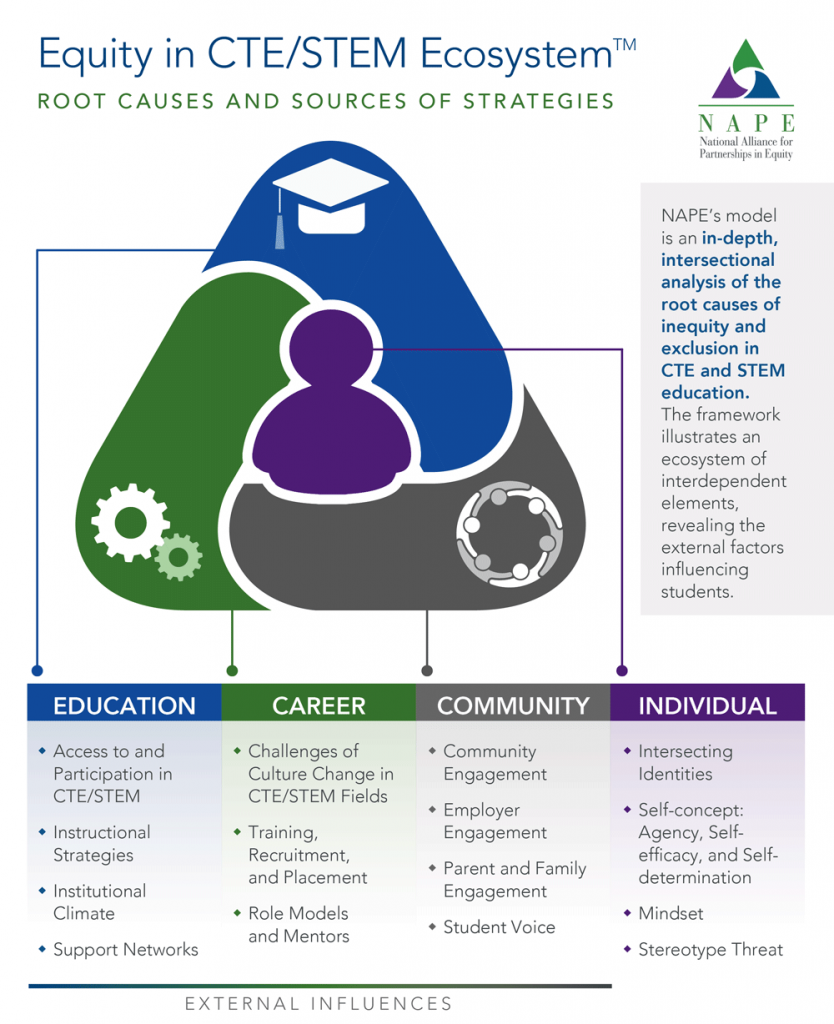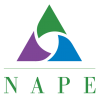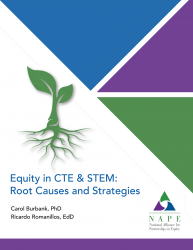Root Causes and Strategies
Equity in CTE and STEM Root Causes and Strategies
Career and Technical Education (CTE) and Science, Technology, Engineering, and Mathematics (STEM) education are critical pathways for America’s youth and adults. They offer access to high-skill, high-wage, in-demand programs of study and pathways to careers with financial stability. However, these occupations remain segregated by gender, race and ethnicity, socioeconomic and disability status, excluding these populations from the opportunities and the promise of CTE and STEM.
There are many root causes for the disparities, and it can be challenging to know where to start to influence change. Equity in CTE and STEM Root Causes and Strategies: A Call to Action is our latest publication. It includes a literature summary and an infographic framework of an ecosystem for equity in CTE and STEM.
We use an intersectional lens to examine how individual learners are affected by the dynamics within education, careers, and community, offering a wealth of insights into specific and overlapping root causes. The snapshot of current theories and evidence-based strategies identifies and addresses the structures, practices, and biases that must shift to promote equity and sustainable change.
CTE and STEM Student Survey Generator
The “CTE and STEM Student Survey Generator” is an innovative tool designed for educators to develop surveys that effectively address equity issues in CTE and STEM programs.
Utilizing the framework of NAPE’s 15 root causes allows for creating specific hypotheses. Educators can choose from hundreds of tailored questions for open-ended or Likert scale surveys, focusing on up to 3 root causes. This level of customization ensures the surveys are relevant and instrumental in identifying the real reasons behind participation disparities.
The tool’s user-friendly interface and targeted approach make it an invaluable asset for educators seeking to understand and improve equity in their programs.


This resource was made possible through initial funding from the National Science Foundation under Grant No. 1203121 and the generous support of FLUOR. Any opinions, findings, and conclusions or recommendations expressed in this material are those of the author(s) and do not necessarily reflect the views of the NSF.
Equity in CTE & STEM:Root Causes and Strategies Call to Action
Webinar, June 3, 2021

Carol Burbank, PhD

Mimi Lufkin

Silvia Ramos

Ricardo Romanillos, EdD


Additional Root Causes and Strategies Materials
Nontraditional Career Preparation
Nontraditional Career Preparation: Root Causes & Strategies is a literature review organized into research theories, evidence, recommendations and strategies, and effective practice and resources based upon root causes. It is designed to be used by CTE professionals at secondary and postsecondary institutions.
The information is available in
- Print form (PDF, with references). You will be asked to complete a brief survey about your intended use of document. The PDF will download after the survey is submitted. Thank you for your assistance!
- Chart form (condensed), and
- Web form.
PIPEline to Career Success for Students with Disabilities
Other Resources
NSF INCLUDES Coordination Hub Research Releases New Report on Broadening Participation in STEM
NAPE is proud to be a part of the NSF INCLUDES National Network through our recently completed Design, Development, and Launch Pilot Project, Intermountain STEM (IMSTEM) and our current NSF INCLUDES planning grant, WE ARE STEM AND CTE in the Middle Grades. Recently, the NSF INCLUDES Coordination Hub released research that outlines evidence-based strategies to attract and retain historically underrepresented racial and ethnic groups in STEM education.
Their research focuses on seven key areas:
- culturally responsive pedagogical practices,
- family support,
- hands-on learning,
- summer bridge programs,
- research experiences,
- counterspaces/safe spaces, and
- mentoring.
While each focus area outlines clear strategies for implementation, the authors make a strong argument for building and maintaining important partnerships, utilizing a multicomponent approach, and designing for the local needs of one’s community.
NAPE members can access this and other resources to support their efforts in broadening participation in STEM by joining the INCLUDES National Network and and by visiting the NAPE WE ARE STEM AND CTE in the Middle Grades webpage.
NSF INCLUDES Coordination Hub (2020). Broadening Participation in STEM: Evidence-based Strategies for Improving Equity and Inclusion of Individuals in Underrepresented Racial and Ethnic Groups (Research Brief No. 1). Available at https://www.includesnetwork.org/viewdocument/coordination-hub-research-brief-im?CommunityKey=5e902dcd-362e-47be-a076-16bc71e2f038&tab=librarydocuments

